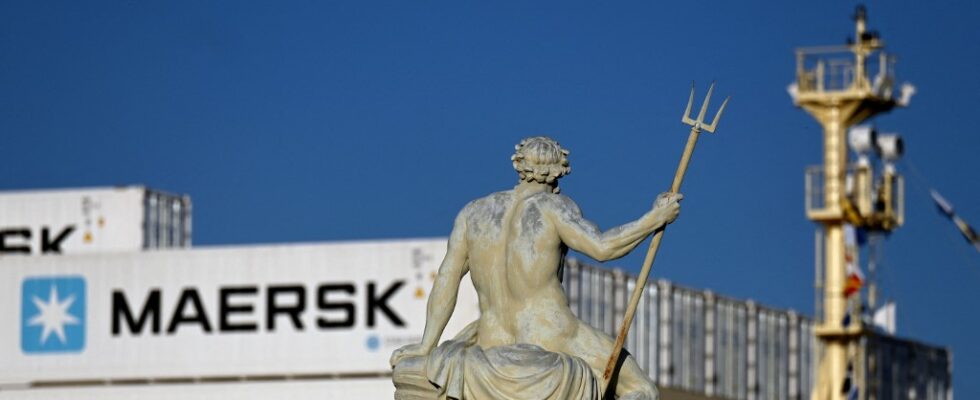(BFM Bourse) – Shares of Danish Maersk and German Hapag-Lloyd are experiencing sell-offs this Wednesday as Maersk plans to once again pass through the Red Sea and CMA CGM could transit more ships via the Suez Canal.
After having progressed significantly on the stock market in recent weeks, the prices of listed shipowners fell sharply this Wednesday. In Copenhagen, the Danish sector giant Maersk lost 4.6% while in Frankfurt the German Hapag-Lloyd lost 5.1% at the end of the morning.
These declines are similar to profit taking while the two stocks have posted respective increases of more than 10% and more than 30% since the start of the attacks in the Red Sea, which led to an increase in their shares, the market anticipating increases in freight rates, and therefore their prices.
The drop observed this Wednesday may be fueled by the declarations of several heavyweights in the sector who announced that they wanted to increase the number of ships transiting the Red Sea (and by extension the Suez Canal) after having previously suspended their operations in this region.
>> Access our exclusive graphic analyses, and gain insight into the Trading Portfolio
“Operation Prosperity Guardian”
Maersk said in a statement on Sunday that it was “preparing” to allow its ships to resume transit through the Red Sea, both east and west. This decision follows the formation of an initiative called “Operation Prosperity Guardian”. This mission launched by an international coalition led by the United States aims to guarantee the safety of commercial ships in the Red Sea, an artery where the equivalent of around 12% of world trade circulates, according to the Guardian. This was in response to attacks on ships carried out by Yemen’s Houthis, an armed rebel faction.
“We are currently working on developing plans for the first ships to make the transit and for this to happen as soon as it is operationally possible,” Maersk added.
For its part, the French CMA CGM (unlisted) announced that it planned to “gradually increase” the transit of its ships through the Suez Canal, while certain ships transited through the Red Sea after a ” in-depth assessment of the security situation. “We are constantly monitoring the situation and stand ready to reassess and adjust our plans if necessary,” he added, quoted by Reuters.
Increase in freight rates
The potential resumption of traffic by large shipowners in the Red Sea may lead investors to count on smaller increases in freight rates.
As we explained in a previous article, the disruptions caused by Houthi attacks in the region had led the market to anticipate increases in maritime transport rates (but also air freight). This because the impassability of the Red Sea results in ships bypassing via the Cape of Good Hope, in the south of Africa, to connect Europe to Asia. This extends the duration of a round trip by around 10 days and can therefore increase costs while reducing the supply of available ships.
The actions of shipowners have therefore progressed significantly since mid-December and the start of the incidents in the Red Sea. The Solactive Global Shipment index, which compiles the stock market performance of 47 listed maritime transport groups, rose from 156.93 points on December 13 to around 180 points currently, an increase of almost 15%.
Julien Marion – ©2023 BFM Bourse
